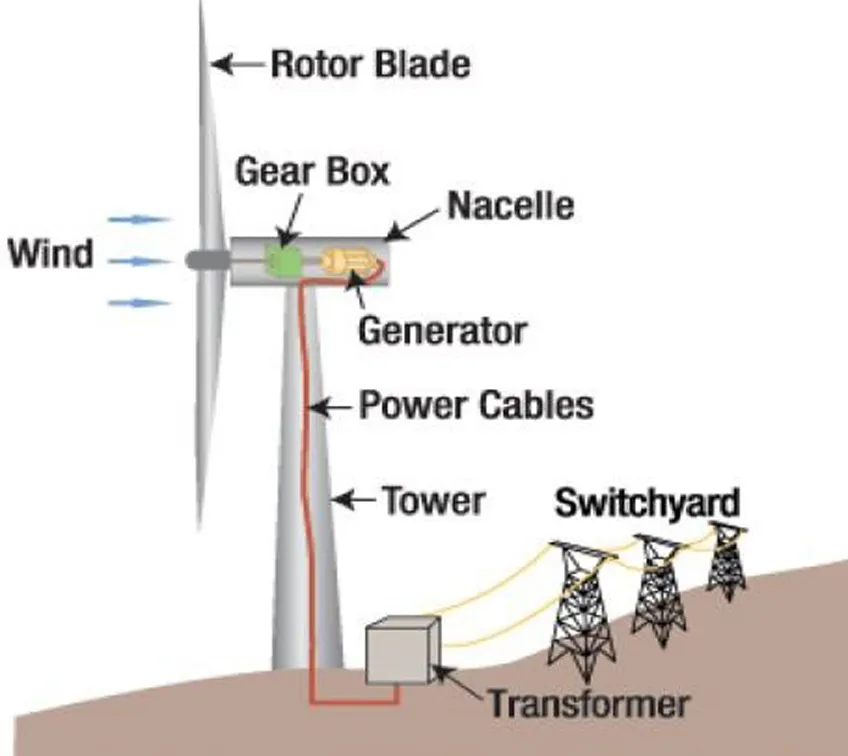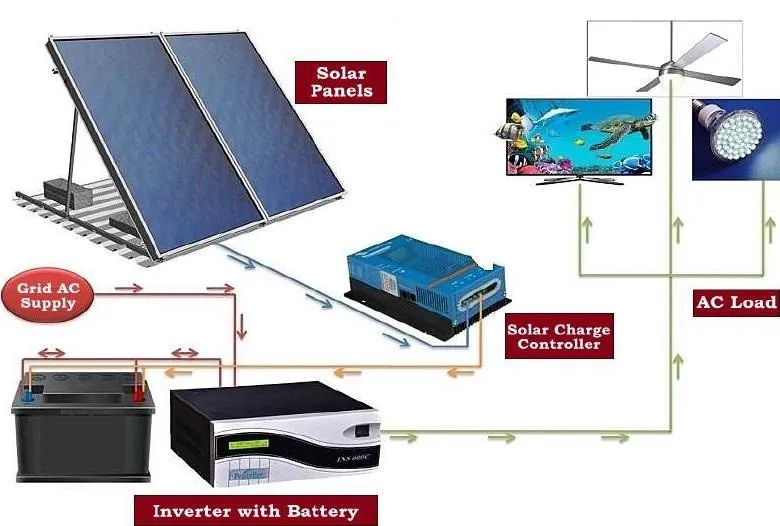If you want to know about the planning of electrical installation or concept of earthing system or introduction of electricity production, please click the link.
Rural electrification refers to the process of providing electrical power to rural areas that are not already connected to the electricity grid. In many parts of the world, rural areas lack access to reliable and affordable electricity, which can have a significant impact on the daily lives of the people living in these areas.
- The rural agricultural and non-Agriculture consumers (domestic and non-domestic load) of the country are generally serviced through the local distribution network Many rural areas of the country face insufficient electricity supply, consequently the distribution utilities are forced to resort to load shedding, thus affecting the power supply to both Agriculture and non-Agriculture consumers
- The demand of power in rural areas is increasing day by day due to changing consumer base, improving living standards for which growth of rural infrastructure needs to be regularly undertaken
- The investment in the distribution network is low due to bad financial health of the distribution companies Therefore in order to augment the reliability and quality of supply distribution network needs to be strengthened
- To improve the commercial viability of power distribution, there is need for metering of all categories of the consumers
1) DDUGJY
- DEENDAYAL UPADHYAYA GRAM JYOTI YOJANA
- Earlier known as “Rajiv Gandhi Grameen Vidyutikaran Yojana ( RGGVY )”
- The Government of India launched ‘Rajiv Gandhi Grameen Vidyutikaran Yojana (RGGVY) Programme for creation of Rural Electricity Infrastructure Household Electrification, in April 2005 for providing access to electricity to rural households
- Deen Dayal Upadhyaya Gram Jyoti Yojana (was launched on 25 th July 2015 in Patna the DDUGJY is one of the flagship programmes of the Ministry of Power and will facilitate 24 x 7 supply of power
- This scheme will enable to initiate much awaited reforms in the rural areas
- It focuses on feeder* separation (rural households agricultural) and strengthening of sub transmission distribution infrastructure including metering at all levels in rural areas
- This will help in providing round the clock power to rural households and adequate power to agricultural consumers
2) Objectives of DDUGJY
- To provide electrification to all villages
- Feeder separation to ensure sufficient power to farmers and regular supply to other consumers
- Improvement of Sub transmission and distribution network to improve the quality and reliability of the supply
- Metering to reduce the losses i e Metering at all levels (input points, feeders and distribution transformers
- To ensure the improvement in agricultural productivity and electrification of all the households
*A feeder is a conductor which connects the substation (or localized generating station) to the area where power is to be distributed Generally, no tapping’s are taken from the feeder so that current in it remains the same throughout the main consideration in the design of a feeder is the current carrying capacity
3) Benefits from the scheme
- All villages and households shall be electrified
- Increase in agriculture yield
- Business of Small and household enterprises shall grow resulting into new avenues for employment
- Improvement in Health, Education, Banking (ATM) services
- Improvement in accessibility to radio, telephone, television, internet and mobile etc.
- Betterment in social security due to availability of electricity
- Accessibility of electricity to schools, panchayats, hospitals and police stations etc.
- Rural areas shall get increased opportunities for comprehensive development
- In India 99.25 % of villages were electrified at the end of March 2017
- Villages of 20 States/UTs namely Chandigarh, Delhi, Haryana, Himachal Pradesh, Punjab, Rajasthan, Daman Diu, D N Haveli, Goa, Gujarat, Maharashtra, Andhra Pradesh, Kerala, Lakshadweep, Puducherry, Tamil Nadu, Telangana, A N Island, Sikkim and Tripura achieved 100 % electrification as on 31.03.2017
- Villages of 6 States namely Uttar Pradesh (99.99 %) West Bengal (99.99 %) Karnataka (99.91 %) Madhya Pradesh (99.9 %) Nagaland (99.71 %) and Uttarakhand (99.63 %) were electrified more than 99 % but less than 100 % as on 31.03.2017
- Villages of 10 States namely Bihar (98.8 %), Odisha (98.69 %) Jammu Kashmir (98.39 %) Chhattisgarh (98.05 %) Jharkhand (97.9 %) Assam (97.51 %) Mizoram (97.44 %) Manipur (96.64 %) and Meghalaya (96.44 %) were electrified more than 96% but less than 99% as on 31.03.2017
- Arunachal Pradesh was the only state in India which was lagging behind the race of village electrification only 76.63 % villages of the state were electrified as on 31.03.2017
4) Decentralised Distributed Generation (DDG)
Under Section-13 of the Act EA 2003 which allows the setting up of “Captive Units, the following institutions may be exempted (for rural electrification and for bulk purchase of power and management of local distribution in rural areas through)
- Local authority,
- Panchayat Institution,
- Users’ association,
- Co-operative societies,
- Non governmental organizations, or
- Franchisees
- Distributed generation is an integral part of the RGGVY (set up in 2005) to achieve its target
- Many states have started using distributed generation for electrification of remote villages under this scheme
- Even before it was enshrined in the EA 2003 Act, many remote areas used micro hydel plants to provide electricity in villages
- The Janaki Chatti Micro Hydel Committee is an outstanding example of a rural electricity co operative
5) Benefits of DDG
It has many benefits for electrically remote villages:
- The generator can be sited close to the end user, thus decreasing transmission and distribution costs and electrical losses
- Sites for small generators are easier to find
- Distributed generators offer reduced planning and installation time
- Because the distributed generation units are distributed, the ‘may be more reliable One unit can be removed for maintenance or service with only a moderate effect on the rest of the power distribution system This is especially important for new technologies where the long-term reliability is not proven
- Newer distributed generation technologies offer an environmentally clean and low noise source of power
- Newer distributed generators can run on multiple types of fuels This allows flexibility and reduction in cost of the infrastructure required to get the fuel to the generator
- The preferred fuel source differs in various parts of the world However, the required quality of the selected fuel may be more important with certain new distributed generation technologies
- Newer distributed generators can run on fuels generated from bio gasification Biomass ( hog waste, agricultural by products) is a truly renewable source of fuel in most developing countries, and especially, in agricultural regions
- Power is readily available, and it has improved quality and reliability as compared to power produced from central generating stations
- Depending on the nature of fuel used, electricity prices could be lower than power from central plants
6) Status of DDG in India
- The present installed capacity of distributed generation is about 13,000MW (10,000MW diesel, 3000MW renewables).
- The majority of this is accounted for by diesel engines that are used for backup power (in the event of grid failure) and operate at very low load factors.
- The share of the energy generation from distributed generation is marginal (about 2-3 per cent of the total generation).
- Apart from the diesel engines, the distributed generation options that have been promoted in India are modern renewables.

7) Renewable energy technologies as DDG
- Biomass Gasification
- Mini Hydro
- Wind
- Solar (Photovoltaic)
i) Biomass Gasification

ii) Mini Hydro

iii) Wind

iv) Solar (Photovoltaic)


8) Factors taken into account for generation of electricity
Initial cost
- For a given rating of a unit (in the minds of planners, engineers, investment must be known. Naturally, lower the initial cost, better it is.
Running cost
- To produce a given amount of electrical energy, the cost of conversion process (including proportional cost of maintenance / repairs of the system) has to be known.
Limitations
- Whether a particular resource (raw material) is available, whether a particular method of generation is techno-economically viable.
Method showing characteristics
- Perpetuity, (be of endless duration) efficiency, reliability (available in appropriate quantity), cleanliness (non-toxic, non-polluting, less maintenance), simplicity.
In recent years, there have been a number of initiatives aimed at promoting rural electrification in developing countries, where access to electricity is often limited. These initiatives may involve the use of renewable energy sources, such as solar and wind power, which can be more cost-effective and sustainable in remote rural areas.